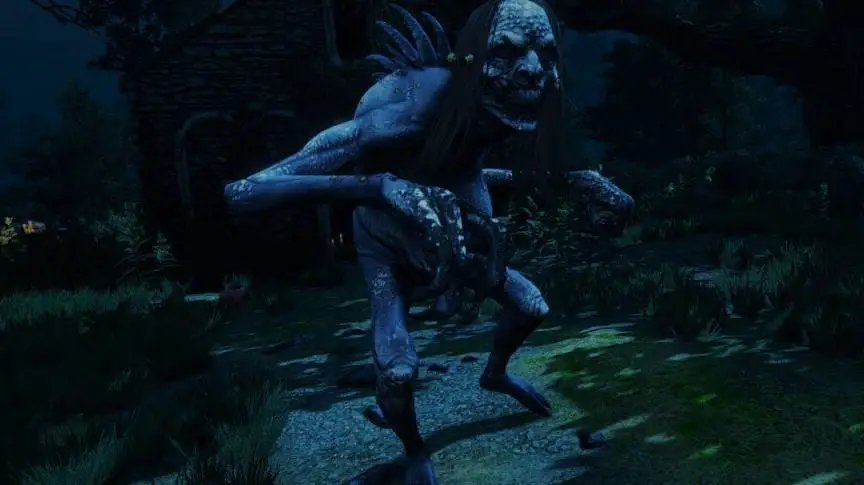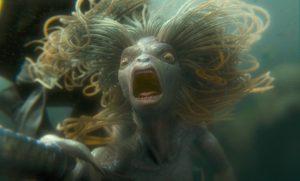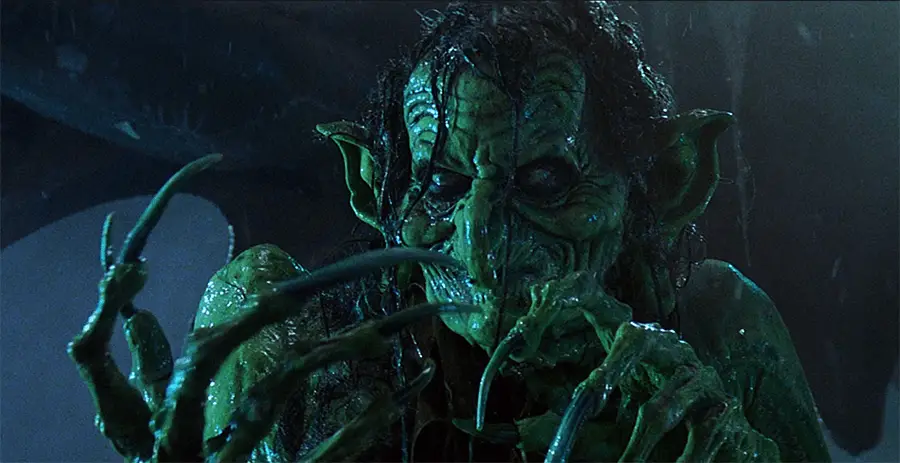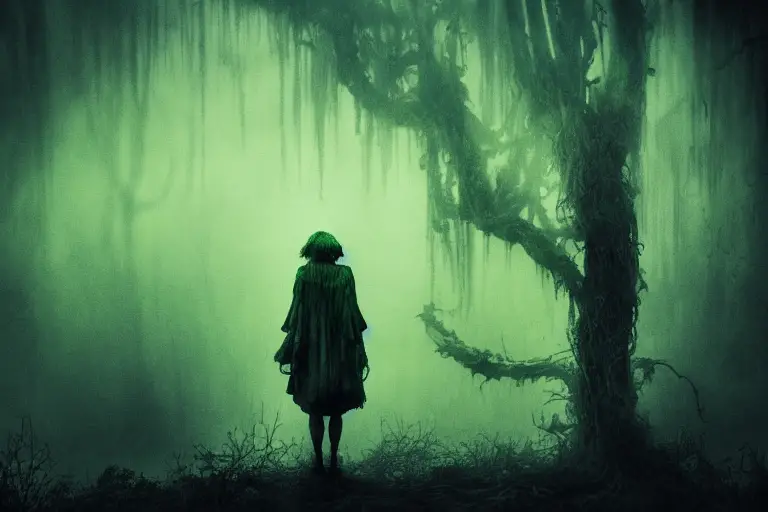Share the Lore!
By: Alex Postrado
Greenteeth Vs. Grindylows: What Is The Difference?
Water spirits and monsters are undeniably common in folklore from all over the world.
Some are believed to dwell in the depths of the ocean.
Some inhabit the flowing rivers and falls.
While others appear around ponds, lakes, bogs, and other types of wetlands.
Regardless of the spot, these mythical water beings were typically what provided explanations for a lot of missing people cases near bodies of water for much of recorded history.
And it is also possible that they have been credited, as well, for mysterious deaths and disappearances from a time that was more ancient than that.
English folklore is no different when it comes to the belief in water-dwelling monsters.
And when it is time to talk about these legendary entities, two particular species easily come to mind.
Jenny Greenteeth and the grindylows.
Of course, some people would say, “Aren’t they the same?”
While both species are malicious by nature and are claimed to lurk in various inland waters, in actuality, there is definitely more distinction between the two than meets the eye.
And as for the answer to the prevailing question — well, we are just about to find out.

Who is Jenny Greenteeth?
With roots that could be traced back to antiquity and stretch even to the present day, Jenny Greenteeth is certainly one of the most recognized water beings of English lore.
She appears most commonly in legends from Lancashire.
But she is also known in Cheshire, Shropshire, and other nearby counties since at least the 19th century.
Stories say that Jenny is a water hag of some gruesome kind.
She has long, unkempt hair; sharp, pointed teeth; green, speckled skin; and sinewy arms — which she uses to pull victims into a cold, watery grave.
Also called Ginny Greenteeth, Jinny Greenteeth, Jeannie Greenteeth, or simply, Wicked Jenny, this malevolent water spirit — sometimes, considered a demon — clearly has a penchant for watching people suffocate to their deaths.
And once they have completely succumbed to drowning, it is said that Jenny, then, proceeds to eat them.
Alarmingly enough, children are Jenny’s victims of choice.
From time to time, elderly and unwary explorers also fall prey to Jenny’s sinister ruse, where she conceals herself under a mat of green weeds — particularly duckweed — in order to mislead, ensnare, and eventually drown them.
The thing is, when duckweed covers an entire surface of stagnant water, it can make it appear as if it is solid.
However, when a person tries to walk on it, that is when it collapses into an entangling mess of potentially life-threatening disaster.
Due to this, the name Jenny Greenteeth is also often used to refer to duckweed or pondweed — which, unfortunately, is among the most common forms of small water plants in the whole of Britain.
With that in mind, parents have — for a very long time — warned children not to venture too near to ponds and lakes, or else they will get dragged by Jenny’s unnaturally long, green arms.
It is also believed by some that Jenny sometimes lurks in the treetops, perching on branches and moaning in the dead of night to boot.
But this part of the lore is widely inferred as a product of mistranslation over the years of “Jenny Hewlet” or “Jenny Howlet” — old folk names for barn owls from Northern England.
What is a Grindylow?
A grindylow, on the other hand, is said to be a diminutive humanoid with scaly skin, piercing claws, pointed teeth, and long, wiry arms with elongated fingers.
Similar, but not to be confused with Jenny Greenteeth, grindylows also have a greenish complexion — helpful in camouflaging themselves in inland waters as they wait for their prey.
At times, grindylows are also depicted having a tail to match their scales.
And they are known to reside in bogs and marshes, waiting for careless children to pass by.
A grindylow’s strong grip is what makes encounters with them generally fatal.
As soon as they spot children nearby, they would stretch out their arms and effortlessly drag the young victims underwater — in most cases, to never be seen again.
People living across Yorkshire and Lancashire are said to be the ones most at risk of a grindylow attack, as these aquatic monsters mostly lurk in the said counties.

Also sometimes spelled as grundylow, some claim the name is a cognate of Grendel — relative with its use in the Old English epic poem Beowulf, as well as in other Old English characters, evocative of meres, bogs, swamps, and lakes.
Are They the Same?
While there certainly are a lot of things in common with the lore of Jenny Greenteeth and the grindylows, they are considered to be separate species of their own.
Perhaps, two creatures that share a single pool of origin, but still aren’t one and the same.
As for Wicked Jenny, from the dawning of her lore, she has managed to stay prominent over the centuries to ultimately inspire a monster, named Meg Mucklebones, in Ridley Scott’s 1985 fantasy film Legend.
She has also graced multiple 5th Edition Dungeons & Dragons adventure modules, including 2014’s Tales Trees Tell and 2016’s Suits of the Mist.
On the flip side, grindylows got their roleplaying game debut from Pathfinder.
And literature-wise, they have played a villainous part in China Miéville’s well-received novel, The Scar.
Jenny Greenteeth and the Grindylows: Adding Truth to the Lore
As mentioned earlier, water spirits and entities exist in most — if not all — folklore.
Slavic lore has Rusalka. Japanese mythology has the Kappa. Scottish myths have kelpies. America has the Storm Hag. And Australia has Bunyip.
And that is not even touching on the lesser-known monsters from stories in the many secluded areas of the world.
In English folklore, alone, there are already two more fabled creatures that resemble Jenny Greenteeth and the grindylows.
They are called Peg Powler and Nelly Longarms.
If these mythical water-residing creatures aren’t a clear representation of how omnipresent water is, then I don’t know what is.
You see, we now live in a world where modern waterway engineering and plumbing are present.
Moreover, in-house water lines already exist. And along with the convenience, is the added assurance in our safety.
To tell the truth, as essential as water is, it could also be achingly deadly.
15th- to 16th-century England was witness to that — of course, among other places of yore.
In a time of wars, plagues, and even perilous childbirth, who would have thought that drowning would still induce an alarming rate of deaths among people of all ages?

In fact, 40% — or nearly half — of all accidental deaths around Medieval England were caused by drowning.
Toddlers, children, men, and women — all became victims of seemingly safe bodies of water.
And this, perhaps, birthed the lore of Jenny Greenteeth, the grindylows, and other mythical monsters of the deep.
While completely preventing everyone from going near the waters would prove impossible — as there is much need for water in basically all aspects of day-to-day living — stories, warning people of the dangers of water might just be the next best option.
In that sense, both Jenny Greenteeth and the grindylows would be considered as mere works of fiction, created to deter people — especially children — from venturing near treacherous waters.
In the end, this is yet another proof that folklore is often reflective of what is happening in society.
And what Jenny Greenteeth and the grindylows are especially teaching us, is that we can never be too safe.
Saying, “where there is water, there is life” is no longer entirely true.
At times, where there is water, there is danger.
Other times, there’s risk.
And at fateful hours, there’s death.
References:
Jenny Greenteeth The Legend of Jenny Green-Teeth Jenny Greenteeth - Dark Tales Her Name Is Jenny Greenteeth Legends, Myths, and Nightmare Fuel Drowning in Tudor England: why was water so dangerous?
